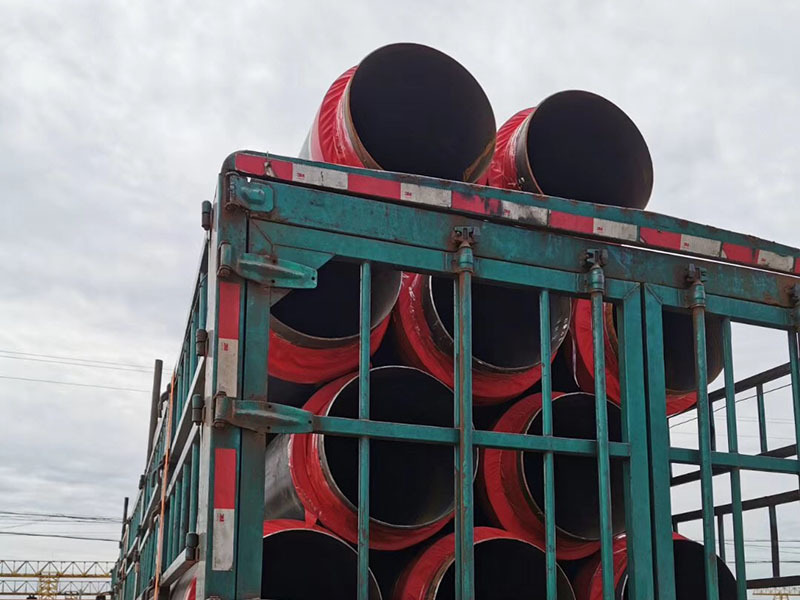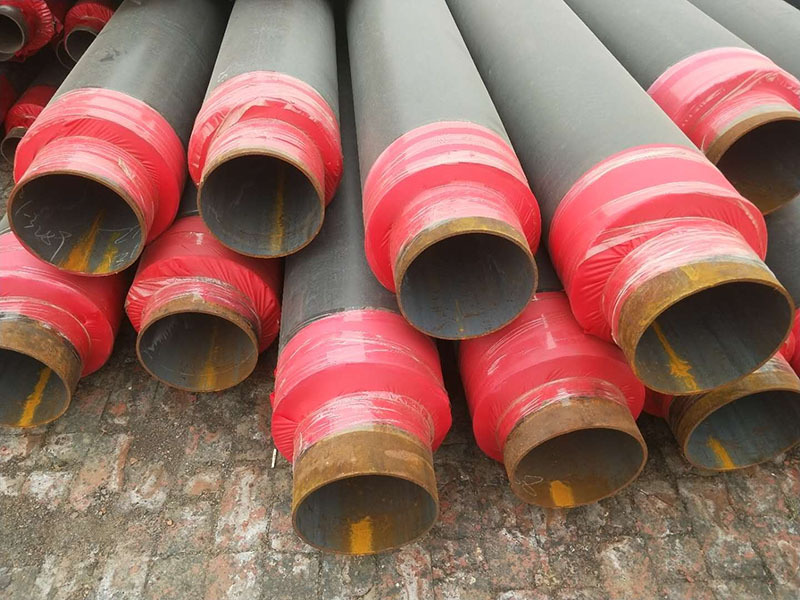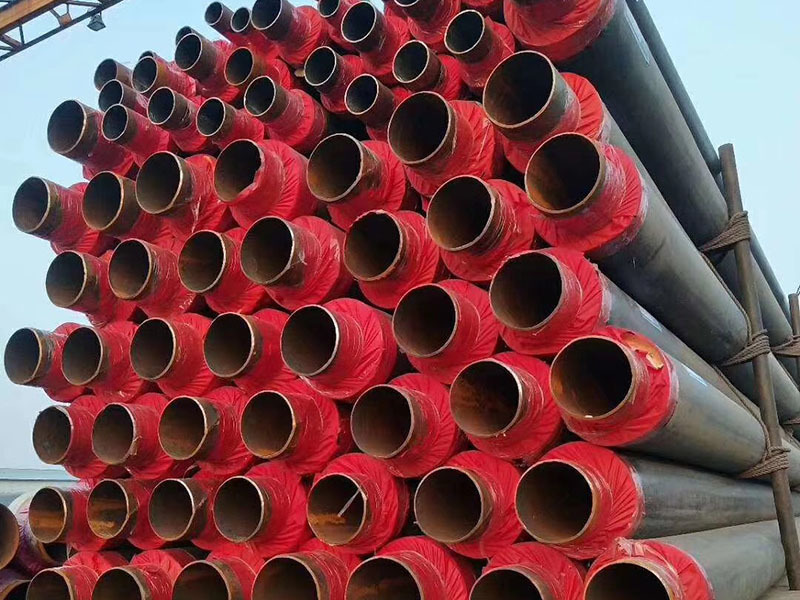Polyurethane Insulation Pipe Fittings: A Breakthrough in Thermal Insulation
Release time:
2025-04-23
Polyurethane Insulation Pipe Fittings: A Breakthrough in Thermal Insulation Table of Contents 1. Introduction to Polyurethane Insulation Pipe Fittings 2. Benefits of Polyurethane Insulation Pipe Fittings 3. Applications of Polyurethane Insulation Pipe Fittings 4. Construction and Design of Polyurethane Insulation Pipe Fittings 5. Energy Efficiency: A Key Advantage 6. Durab
Polyurethane Insulation Pipe Fittings: A Breakthrough in Thermal Insulation
Table of Contents
- 1. Introduction to Polyurethane Insulation Pipe Fittings
- 2. Benefits of Polyurethane Insulation Pipe Fittings
- 3. Applications of Polyurethane Insulation Pipe Fittings
- 4. Construction and Design of Polyurethane Insulation Pipe Fittings
- 5. Energy Efficiency: A Key Advantage
- 6. Durability and Maintenance of Polyurethane Insulation Pipe Fittings
- 7. Installation Process for Polyurethane Insulation Pipe Fittings
- 8. FAQs about Polyurethane Insulation Pipe Fittings
- 9. Conclusion: The Future of Thermal Insulation
1. Introduction to Polyurethane Insulation Pipe Fittings
Polyurethane insulation pipe fittings represent a **significant advancement** in the field of **thermal insulation**. They are designed to minimize heat transfer through pipes used in various industries, such as HVAC, refrigeration, and plumbing. As energy costs continue to rise and environmental concerns take precedence, the demand for effective thermal insulation solutions has become paramount. In this article, we will explore the unique features, benefits, and applications of polyurethane insulation pipe fittings, highlighting their role as a **breakthrough** in achieving superior **energy efficiency**.
2. Benefits of Polyurethane Insulation Pipe Fittings
Polyurethane insulation pipe fittings offer numerous advantages that make them an **ideal choice** for thermal insulation. Here are key benefits:
2.1 Enhanced Thermal Performance
One of the most remarkable characteristics of polyurethane insulation is its **low thermal conductivity**. This means that it is highly effective at preventing heat transfer, ensuring that systems maintain their desired temperature without excessive energy consumption.
2.2 Cost-Effectiveness
When considering long-term costs, polyurethane insulation pipe fittings can lead to substantial savings. Their ability to minimize heat loss results in lower energy bills, making them a financially sound investment.
2.3 Lightweight and Easy to Handle
Unlike traditional insulation materials, polyurethane pipe fittings are lightweight, making them easier to transport and install. This reduces labor costs and improves overall efficiency during the installation process.
2.4 Versatility in Applications
These fittings can be used in a variety of applications, including residential, commercial, and industrial settings. Their adaptability makes them suitable for different types of pipes and insulation systems.
2.5 Environmental Benefits
Polyurethane insulation is not only efficient but also eco-friendly. Its energy-saving properties contribute to a lower carbon footprint, aligning with global sustainability goals.
3. Applications of Polyurethane Insulation Pipe Fittings
The versatility of polyurethane insulation pipe fittings allows them to be utilized across multiple industries. Here are some prominent applications:
3.1 HVAC Systems
In heating, ventilation, and air conditioning systems, these fittings play a crucial role in maintaining temperature control. They ensure that heated or cooled air does not escape, enhancing the system's efficiency.
3.2 Refrigeration
In refrigeration systems, polyurethane insulation pipe fittings help maintain low temperatures, reducing the energy required to keep products chilled or frozen. This is particularly important in commercial food storage and transportation.
3.3 Plumbing
In plumbing, these fittings provide protection against heat loss in hot water systems, ensuring that water remains hot until it reaches its destination. This is essential for residential and commercial buildings alike.
3.4 Industrial Processes
Many industrial processes rely on precise temperature control. Polyurethane insulation pipe fittings ensure that heat-sensitive materials are not adversely affected by external temperature fluctuations.
4. Construction and Design of Polyurethane Insulation Pipe Fittings
The construction of polyurethane insulation pipe fittings is crucial to their effectiveness. These fittings typically consist of a rigid polyurethane foam core, which is encased in a protective outer layer.
4.1 Rigid Foam Core
The rigid foam core is the heart of the insulation properties. It is made from a combination of polyols and isocyanates, which react chemically to create a dense, closed-cell structure. This structure provides exceptional insulation.
4.2 Protective Outer Layer
The outer layer is designed to protect the foam core from physical damage and environmental factors. Common materials for this layer include PVC, metal, or other durable substances that ensure longevity.
4.3 Customization Options
Manufacturers often provide customization options for polyurethane insulation pipe fittings, allowing for specific sizes and shapes to meet project requirements. This ensures a perfect fit and optimal performance.
5. Energy Efficiency: A Key Advantage
Energy efficiency is a primary concern in today's climate-conscious world. Polyurethane insulation pipe fittings excel in this regard, helping to significantly reduce energy consumption across various applications.
5.1 Lower Energy Bills
By minimizing heat loss, these fittings contribute to lower energy bills for both residential and commercial users. The savings can be substantial over time, making them a cost-effective choice.
5.2 Supporting Sustainability Goals
The use of polyurethane insulation aligns with sustainability goals by reducing the overall energy demand. This is particularly important as industries strive to reduce their carbon footprints and comply with environmental regulations.
5.3 Enhanced System Performance
With less energy wasted, systems can operate more efficiently, leading to improved performance. This means fewer breakdowns and extended lifespans for HVAC and refrigeration systems.
6. Durability and Maintenance of Polyurethane Insulation Pipe Fittings
Durability is a key factor to consider when investing in insulation solutions. Polyurethane insulation pipe fittings are designed to withstand various environmental conditions, ensuring long-lasting performance.
6.1 Resistance to Moisture and Chemicals
Polyurethane is inherently resistant to moisture and various chemicals, making it suitable for different environments, including humid or corrosive settings. This characteristic reduces the likelihood of degradation over time.
6.2 Low Maintenance Requirements
Once installed, polyurethane insulation pipe fittings typically require minimal maintenance. This is a significant advantage for industries looking to minimize downtime and maintenance costs.
6.3 Longevity
With proper installation, these fittings can last for decades, making them a reliable choice for any project. Their durability ensures that users won't have to frequently replace insulation, further enhancing cost-effectiveness.
7. Installation Process for Polyurethane Insulation Pipe Fittings
Proper installation is critical to maximizing the benefits of polyurethane insulation pipe fittings. Here, we outline the general installation process:
7.1 Preparation
Before installation, ensure that all surfaces are clean and free from debris. This helps create a strong bond between the pipe and the insulation.
7.2 Cutting to Size
Depending on the application, the fittings may need to be cut to size. Use appropriate tools to ensure clean cuts that allow for a snug fit.
7.3 Securing the Fittings
Place the polyurethane insulation pipe fittings onto the pipes, ensuring they fit securely. Use adhesives or mechanical fasteners as needed to secure them in place.
7.4 Sealing Joints
After installation, it is essential to seal joints properly to prevent air leakage. This can be accomplished using sealants or tape specifically designed for insulation applications.
7.5 Final Inspection
Conduct a final inspection to ensure that all fittings are securely installed and that there are no gaps or leaks. This step is crucial for ensuring optimal thermal performance.
8. FAQs about Polyurethane Insulation Pipe Fittings
8.1 What are the main benefits of using polyurethane insulation pipe fittings?
The main benefits include enhanced thermal performance, cost-effectiveness, lightweight design, versatility, and environmental advantages.
8.2 Can polyurethane insulation pipe fittings be used in extreme temperatures?
Yes, these fittings are designed to withstand a wide range of temperatures, making them suitable for both hot and cold applications.
8.3 How long do polyurethane insulation pipe fittings last?
With proper installation and maintenance, these fittings can last for decades, ensuring long-term performance.
8.4 Are polyurethane insulation fittings environmentally friendly?
Yes, they contribute to energy savings, which helps reduce overall carbon emissions and aligns with sustainability goals.
8.5 What industries benefit most from polyurethane insulation pipe fittings?
Industries such as HVAC, refrigeration, plumbing, and various manufacturing sectors benefit greatly from these fittings.
9. Conclusion: The Future of Thermal Insulation
Polyurethane insulation pipe fittings are indeed a **breakthrough** in thermal insulation technology. Their combination of energy efficiency, durability, and versatility positions them as a **superior choice** for various applications. As industries continue to focus on sustainability and cost-effectiveness, these fittings will play an increasingly essential role in shaping the future of thermal insulation solutions. By investing in polyurethane insulation pipe fittings, businesses can enhance their operational efficiency while contributing positively to the environment, making them a sound choice for today's energy-conscious world.
keyword:
Related News






